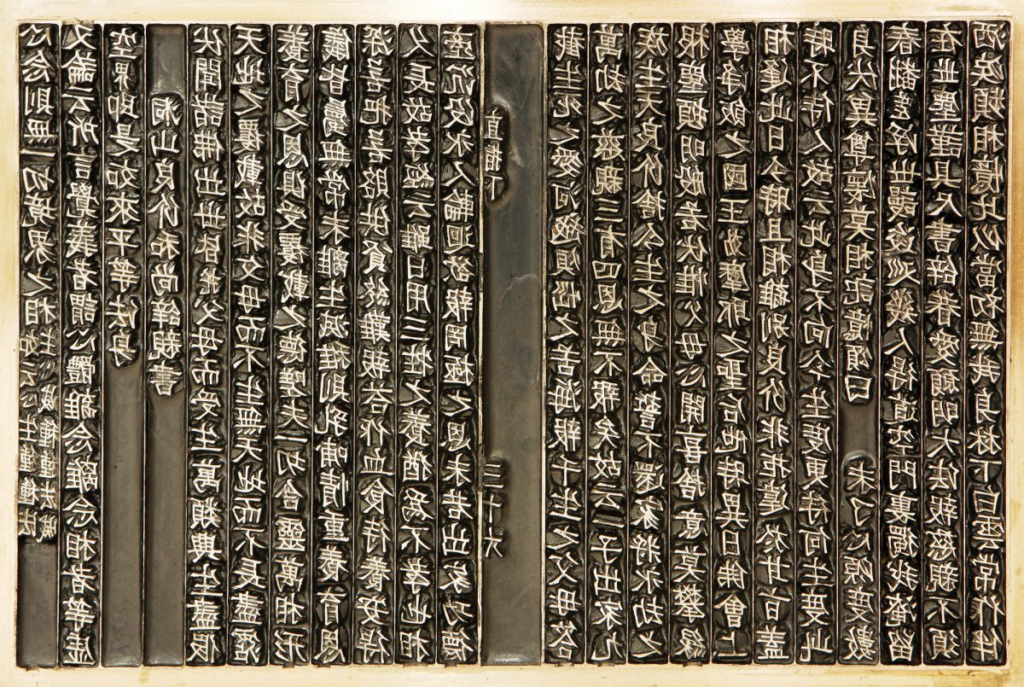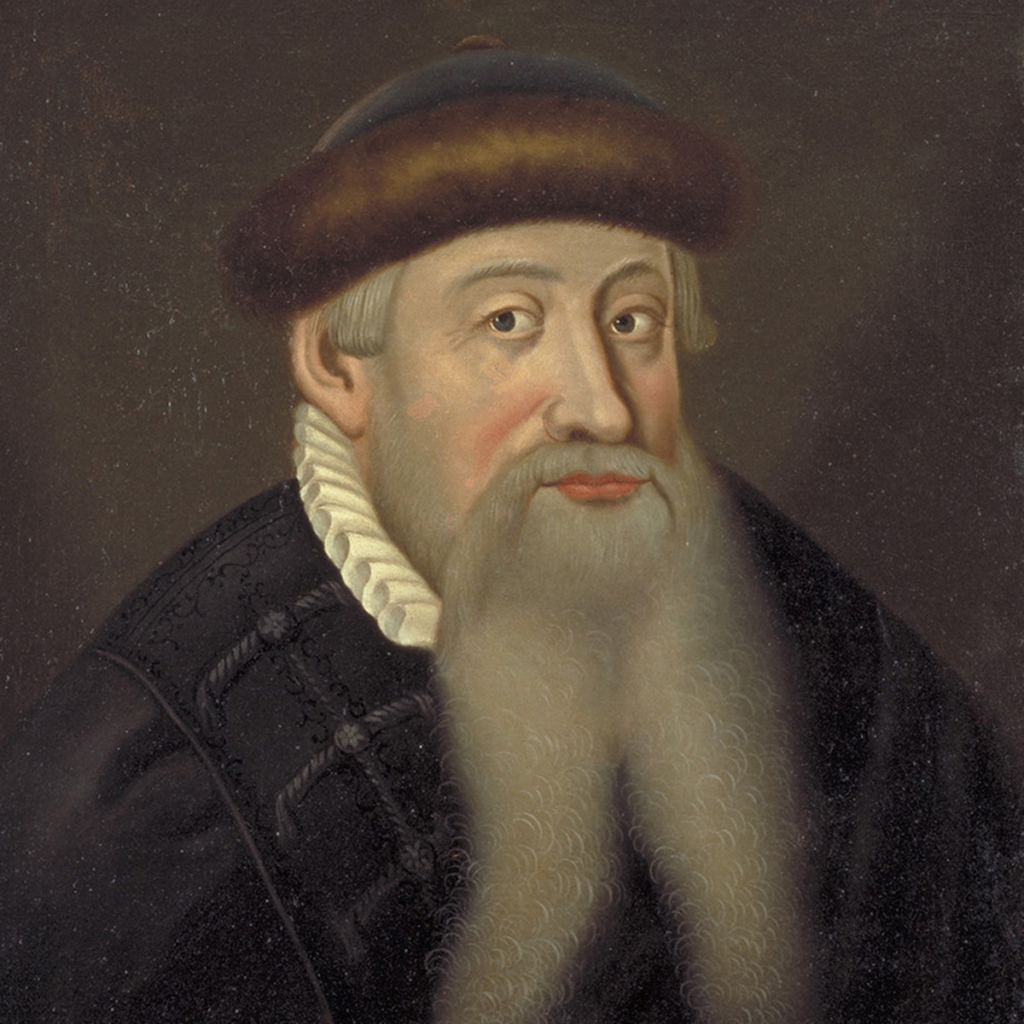Table of Contents
- In 1436, a German goldsmith named Johannes Gutenberg wanted to make a machine that could produce text at an incredible speed.
- He thought his machine might make him money from people who wanted their books made quickly.
- In 1440 he built the first printing press, and it worked!
The invention of the printing press, according to some people, was as significant and revolutionary as the use of fire and the internet. The invention of the printing press was a triumph for several aspects of Western civilization. The printing press allowed books to travel faster, cheaper, and more readily to millions of people. Keep reading to learn more about Johannes Gutenburg and the Printing Press facts.
The First Printing Press in the World
No one knows who invented the first printing press, when it was created, or where it came from, but the world’s earliest known printed text was produced in China in the first millennium A.D.
The Diamond Sutra, a Buddhist text from northern China, is the oldest book we know. Block printing was used to produce the Diamond Sutra, composed using reverse-printing panels of hand-carved woodblocks.
Other texts from Dunhuang have been discovered as well, including a printed calendar dating from AD 877, mathematical charts, a word list, etiquette training, funeral and wedding manuals, children’s instructional materials, dictionaries, and almanacs.
Woodblock Printing
Chinese printers used woodblock printing. Here, individual blocks would have represented a letter, symbol, or image on a printing press. Those blocks wore down quickly, necessitating the production of another block.
This printing technique was refined when clay was utilized instead, and it may be strung together to enhance productivity and speed.
The Korean Printing Press

The first printing was done in China. They would take a woodblock, make the letters backward, put ink on it, and then print by pressing the paper against the block.
Prints were made in China. They used 130,000 blocks to make the Tripitaka. At the same time, products from China brought these innovations to Korean rulers. These rulers were named Goryeo and were very important for printing history.
People called the Khitans were trying to invade Korea. This made the Goryeo government create its own Tripitaka with woodblock printing. They might have wanted to keep their Buddhist identity safe from invaders.
The attempt would be good. It saved the idea and technique for later years when more invaders came. The Mongol ruler Genghis Khan and his successor conquered more ground. They invaded Korea. When they conquered, they burned the Korean copy of the Tripitaka, and it became ashes.
The Goryeo dynasty created a new book. The Tripitaka reboot was going to take a long time, and they needed a new one. So the rulers started to print other books while it was being made.
Civil minister Choe Yun-ui was asked to print Buddhist texts. These texts would take a lot of wood blocks, but he came up with an alternative instead.
He adapted the method that had been used to make coins out of metal and created 3-dimensional characters. He put these pieces of paper together, coated them with ink, and then pressed sheets of paper. When Choe finished, he could reorganize the metal characters. It was faster to a certain extent.
People say that Johannes Gutenberg created the printing press. But Choe Yun-ui did it first, and he did it 150 years before Gutenberg was even born.
European Books before the Printing Press
The majority of books before the invention of the printing press were handwritten and duplicated by hand. Block printing, which involves imprinting each page of text on a woodblock and pressing it onto paper, became more popular. Because these methods were so time-consuming, books were quite pricey.
The vast majority of the books were written in Latin; thus, most people would not have access to them since they were too uneducated to read and understand them. Many people lived their lives without ever looking at one because they heard it from everyone else and what they saw or learned in their little villages as a source of education.
Life of Johannes Gutenberg

Johannes Gensfleisch zur Laden was the second of three children. At some point in 1438, Gutenberg began to experiment with various methods to create a printing machine. He received financing from a rich businessman. Around 1440, Gutenberg was working on many prototypes for the printing press.
Read about Famous Inventors and Inventions
First Experiments
Gutenberg didn’t invent a new thing. He used preexisting ideas and instruments to make his press. He also invented a new idea, which was molded typesetting.
With molding, he was able to make a mold for each character that he needed. The molds can be reused. He was also able to make individual letters because of this process.
The ink that scribes used was different than the ink for metal-type printing because water would go into the wood and leave small marks.
The ink wouldn’t go into the metal, so it flowed down the page. When watery ink touched wet words, they merged and spilled onto the paper. To avoid this disaster, ink was developed that is considerably thicker to work with metal-type printing.
By 1450, Gutenberg had taken a significant step toward the invention of a new type of printing press. The printing machine was made out of a wine press by Gutenberg.
The Gutenberg Bible
Gutenberg kept working on his printing press. He had printed lots of copies of the Bible by 1455. The Bible had three volumes of text in Latin with 42 lines per page and color illustrations.
The printing of the Bible was a big step for humans. It also made technology better in the modern world. The Bible is like a symbol for people who work hard and are frustrated with what they are doing, but someday it will be a legend too.
The Gutenberg Bible is a book. It was printed in 1455 with metal type. This book has a lot of things in it that cannot be found in any other books from this time, like the movable type. Many people had not gone in this new, unknown territory before. The pages were numbered over 1,200, and the printing was done quickly.
The main idea of Johannes Gutenberg and his printing press was to show the visual appearance of beautifully handwritten words without the difficult work of writing out each letter. The words look like they are written in calligraphy that someone with lots of experience wrote. They are written in a way that is easy to read.
The outside of expensive books is made out of a material like a vellum. That means it’s made from calfskin and an animal had to be killed for this. Some people wanted to make books with expensive materials, but they would cost more than everyone could afford.
Instead, Gutenberg used linen cloth from Northern Italy. This paper could handle the pressure of the press, unlike luxurious paper. Rapid manufacturing decreased the cost for increased availability of books so more people could buy books and read them.
Gutenberg’s Last Years
After years of experimenting, he had debt. He was in court because he couldn’t pay his debt. Even though his printing press was a huge success, Gutenberg did not make any money from it, which ultimately led to his ruin.
In a short amount of time, many other printing presses appeared. This happened during the end of the fifteenth century. Today, copyright laws exist. But back then, they didn’t. That meant people could copy your work without you knowing it. Gutenberg never put his name on his work.
Consequences
Ancient texts were republished and distributed more readily once the printing press was invented, allowing scientists of previous eras to provide access and reference to contemporary researchers.
The printing press had a big impact on the Scientific Revolution. Some say it was even the biggest factor. The printing press was used by Nicholaus Copernicus, who wanted to tell people that the Sun is at the center of our universe instead of Earth. This idea challenged what scientists believed for 2,000 years.
One of the significant consequences of Gutenberg’s printing press is the Catholic Church’s reform. Many Catholics were among the first people to use Gutenberg’s printing press. They used it to tell people about their ideas and beliefs and things like rules and indulgences.
Martin Luther was a person who spread the knowledge of the Bible to a lot of people during the sixteenth century, and it led to a type of religious change.
Luther had some feelings and thoughts about what he thought was wrong with his religion and the Church. So he wrote them down in Theses.
He hung them on the door of a church to tell people these thoughts. They were mostly about how money could be exchanged for things that would help people in their time after they die.
The theses were printed quickly and then distributed. There were at least 300,000 copies printed over three years in all of Europe, including translations into languages other than German. Within a couple of months, not only did Germany know about Luther’s theses, but all of Europe knew them too.
Homage to Gutenberg
In April 1900, Mark Twain wrote a letter to the opening of the Gutenberg Museum in Mainz, Germany. Adolf Goerz had requested a congratulatory letter in response to a request from Mark Twain.
The letter said, “What the world is today, good and bad, it owes to Gutenberg. Everything can be traced to this source, but we are bound to bring him homage, for what he said in dreams to the angered angel has been fulfilled, for the bad that his colossal invention has brought about is overshadowed a thousand times by the good with which mankind has been favored.”
Sources
- https://www.britannica.com/biography/Johannes-Gutenberg
- https://www.history.com/topics/inventions/printing-press
- https://lithub.com/so-gutenberg-didnt-actually-invent-the-printing-press/
- https://www.thoughtco.com/johannes-gutenberg-and-the-printing-press-1991865
- https://lemelson.mit.edu/resources/johann-gutenberg
- http://scarc.library.oregonstate.edu/omeka/exhibits/show/mcdonald/incunabula/gutenberg/
P.S. If you enjoyed what you read and are a teacher or tutor needing resources for your students from kindergarten all the way up to high school senior (or even adults!), check out our partner sites KidsKonnect, SchoolHistory, and HelpTeaching for hundreds of facts, worksheets, activities, quizzes, courses, and more!